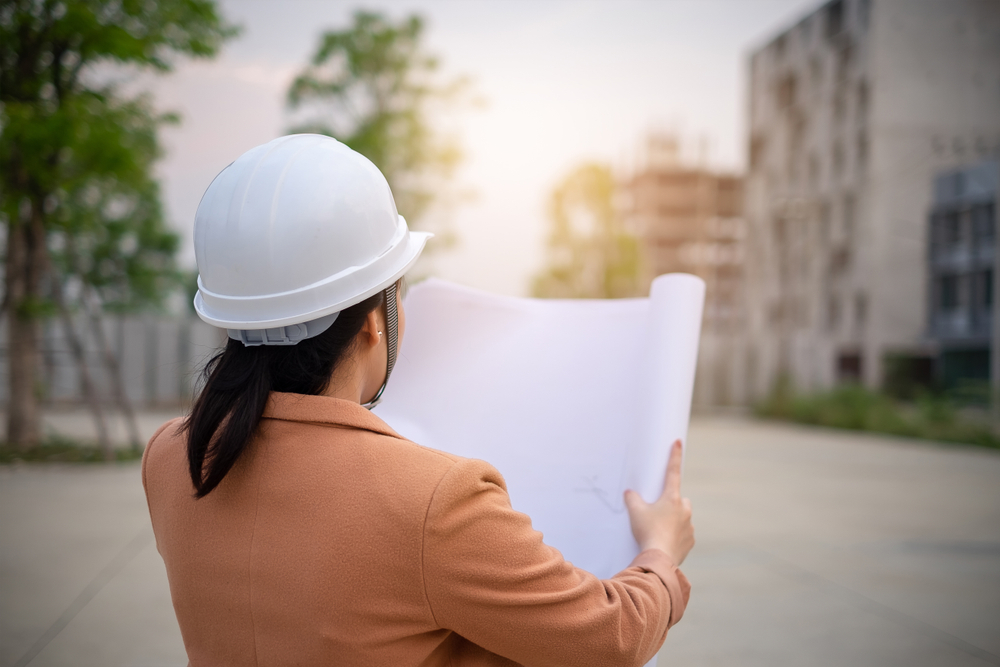What Is a Principal Designer?
What Is a Principal Designer?
Regulation, safety, and accountability have never been more important in UK construction. With every project subject to greater scrutiny and stricter compliance standards than ever before, the way buildings are designed, and by whom, has changed fundamentally.
This article explores what a principal designer is, how the Grenfell tragedy has affected modern regulations, a principal designer’s current role and responsibilities, and why Architecture:WK is a trusted choice for safe and compliant project delivery.
Key Takeaways
- A principal designer is the individual or organisation appointed to plan, manage, and coordinate health and safety during the pre-construction phase of a building project. Architects, such as Architecture:WK, are well-suited to this role, combining design leadership with technical oversight.
- The Grenfell disaster exposed serious failings in building safety and accountability. It led to major reforms, including the Fire Safety Act 2021 and Building Safety Act 2022, which clarify roles, strengthen oversight, and improve overall building safety.
- A principal designer’s current role and responsibilities include planning and overseeing the pre-construction phase, coordinating the design team, providing information to contractors and the client, monitoring compliance, promoting safe and buildable designs, and liaising with the principal contractor.
- Architecture:WK is a RIBA-accredited architect who can assume the role of principal designer, providing expert oversight to ensure safe, compliant, and well-coordinated projects.

What Is a Principal Designer?
A principal designer, as defined by the Construction (Design and Management) Regulations 2015 (CDM 2015), is the individual or organisation appointed by a client to plan, manage, and coordinate health and safety during the pre-construction phase of a building project. This appointment is required for any project involving — or likely to involve — more than one contractor and must be formally documented in writing.
Did You Know? Clients hold legal responsibility for ensuring health and safety on their construction projects, regardless of how much they delegate to others.
Can Architects Assume the Role of Principal Designer?
Absolutely, architects are well-positioned to assume the principal designer role. Their early and consistent involvement in building projects gives them a transparent view of how design decisions affect safety, coordination, and buildability. This makes them perfectly placed to manage risks, guide other consultants, and ensure safety considerations are incorporated from the outset and throughout.
Did You Know? Other professionals or organisations that could assume the principal designer role include engineers, surveyors, and specialist health and safety experts, depending on the project type and complexity.
What makes architects like Architecture:WK such a strong choice as a principal designer is that they combine creative design leadership with technical oversight, meaning they can efficiently manage the design process while simultaneously integrating safety and compliance at every stage.
How Has Grenfell Affected Building Regulations & Safety?
In June 2017, the Grenfell Tower fire in London tragically resulted in 72 deaths and exposed critical failings in building safety, fire prevention, and oversight. The event revealed not only technical shortcomings, such as unsafe cladding and fire safety failings, but also serious gaps in communication and accountability between those responsible for designing, constructing, and managing buildings. This led to a nationwide review of safety standards.
As a consequence, the construction industry has witnessed substantial regulatory changes. Increased emphasis has been placed on clearly defined roles and responsibilities, especially for duty-holders such as principal designers. This is to ensure that health and safety risks are identified, managed, and communicated from the earliest project stages.
Oversight, compliance, and accountability requirements have all been fortified, resulting in a more proactive stance to building safety. These reforms aim to prevent similar disasters from occurring in the future and stress the importance of meticulous planning, comprehensive risk assessment, and clear communication between all parties involved in the design and construction process.
What Key Legislation and Guidance Followed Grenfell?
| Name | Type | Key Purpose / Changes |
|---|---|---|
| Fire Safety Act 2021 | Act | Clarifies and extends the Regulatory Reform (Fire Safety) Order 2005. Explicitly includes a building’s structure, external walls, and shared common areas in multi-occupancy residential buildings to improve fire safety. |
| Building Safety Act 2022 | Act | Introduces a regulatory framework for higher-risk buildings, establishes the Building Safety Regulator, strengthens enforcement, and clarifies duties for all key roles. It also requires that a principal designer be appointed for any project requiring building control approval. |
| Social Housing (Regulation) Act 2023 | Act | Improves safety, transparency, and accountability for social housing landlords, optimises reporting and inspection regimes, and ensures tenants are better protected in relation to building safety. |
| Approved Document B | Technical Guidance | Part of the Building Regulations, providing updated fire safety guidance post-Grenfell, including stricter requirements for fire resistance, cladding, escape routes, and compartmentation. |
Collectively, these Acts and guidance reinforce accountability, improve risk management, and embed a proactive approach to health and safety throughout the design, construction, and management of buildings.
What Is a Principal Designer’s Current Role and Responsibilities?
Following Grenfell, the role of a principal designer has evolved to meet more stringent health and safety requirements.
Key duties of a principal designer include:
- Planning and overseeing the pre-construction phase: Making sure that design risks are assessed and mitigated early.
- Coordinating the design team: Facilitating collaboration and communication between architects, specialist consultants, and engineers to maintain safety and compliance.
- Providing information to contractors and the client: Ensuring all parties comprehend the potential hazards and how they are being managed.
- Monitoring compliance: A key duty under CDM 2015 is to ensure that all designers meet their legal obligations and that residual risks are transparently communicated.
- Promoting safe, buildable designs: Providing guidance on design choices that balance functionality, safety, and aesthetics, reducing risks during construction and operation.
- Liaising with the principal contractor: Keeping the principal contractor informed of any design-related risks that need to be controlled during the construction phase, ensuring a smooth handover from design to build.
Why Choose Architecture:WK as Your Principal Designer?
“When appointed as principal designers, we take our responsibilities very seriously. Our approach is to guide the design process carefully, making sure safety and compliance are at the heart of every decision,” says Sam Kamleh, Director.
Architecture:WK can confidently assume the role of principal designer for your project, providing expert oversight to ensure a safe, compliant, and well-coordinated process.
We offer our professional services across both residential and commercial projects. As a RIBA Chartered Architect, our friendly team is reliable, approachable, and committed to the highest possible standards. From extensions and new builds to interior fit-outs and public spaces, we have the expertise and dedication to deliver projects that are safe, functional, and beautifully designed.
Get in touch with our Teddington architects and explore how Architecture:WK can bring your vision to life.



